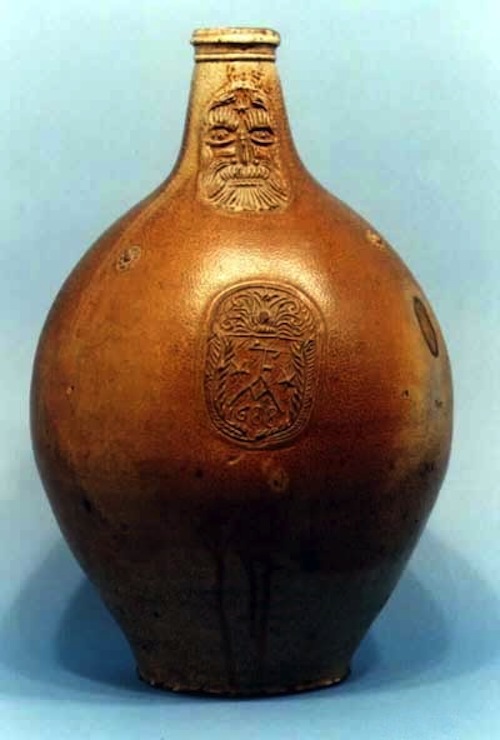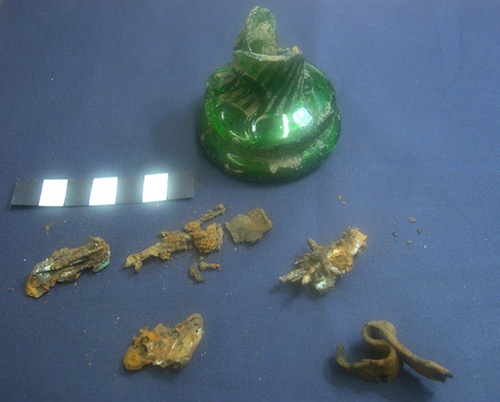The Witch Bottle, or How to Catch a Witch With a Bit of Pee and Some Pins

Are your cows dying? Do your chickens no longer lay eggs? Are you suffering from gout, shingles, or a really bad case of the clap? Do you suspect a witch might have it in for you?
Never fear, for now you can piss your troubles away with the witch bottle! Put your urine and a few other knick knacks into a jug, and that troublesome witch will go curse someone else’s farm. Or better yet, die.
Witch bottles were one of the many articles of folk magic used in England in the early modern period. Like with all folk practices, the details varied widely while retaining some basic similarities. A victim of the witch, or a special witch hunter, would fill a bottle with the victim’s urine. Other articles might be added such as bent nails or pins, thorns, hair, fingernail clippings, and bits of naval fluff. The bottle was then carefully stoppered.
There were two main techniques for using the witch bottle. One was to slowly turn the bottle over the fire. Due to sympathetic magic, the witch’s blood would begin to boil along with the urine. If the bottle exploded, the witch would surely die.
Another technique was to bury the witch bottle under the threshold or in some other entrance to the house such as next to the window or inside the chimney. The urine would attract the witch and the bent pins would trap her in the bottle. Others believed the witch wouldn’t be trapped, but would suffer a slow death unless the bottle was unstoppered. Witch bottles have also turned up in animal graves, human cemeteries, and hedge rows.
Judging from the style of the bottles, the earliest examples date to the mid-17th century. The most popular bottles in the early period were so-called Bellarmine jugs with their distinctive bearded “wild man” face on the neck or body. They were manufactured in the region around Cologne in what is now Germany and used to export a variety of liquids. It’s unclear why these were popular for trapping witches. Perhaps the face was some sort of guardian spirit, or perhaps it fooled the witch into thinking this was another potential victim.

The earliest witch bottles are from eastern England and London, and it is here that the majority have been found. The tradition did spread beyond its place of origin, however, and witch bottles have turned up as far west as Cornwall and as far north as Scotland. None have been found on continental Europe, but the English took the practice with them to the colonies and witch bottles have been discovered in the United States and Australia. Some witch bottles date to as late as the early 20th century.
Folk belief in witchcraft actually thrived throughout the 20th century, with a wave of witch accusations in Germany as recently as the 1950s, and of course the witchcraft panic against Dungeons and Dragons in the 1980s. So who knows? Perhaps concerned parents in modern suburbia are urinating into Coke bottles hoping to ward off the witch next door.
Sean McLachlan is a freelance travel and history writer. He is the author of the historical fantasy novel A Fine Likeness, set in Civil War Missouri, and the post-apocalyptic thriller Radio Hope. His historical fantasy novella The Quintessence of Absence, was published by Black Gate. Find out more about him on his blog and Amazon author’s page.
For a while in the 1990’s it was quite common to see instructions for making witch bottles in books on Wicca for an audience of new Wiccans. Generally the intention in those instructions seems to have been to mark territory or ward off harm, rather than to entrap or do harm. The irony of self-identifying witches making witch bottles to protect against forces or people imagined as hostile to Wicca is pretty dramatic.
Can I make more than one witch bottle
Where to get a whitch bottle or can you use ordinary bottle with ordinary nails